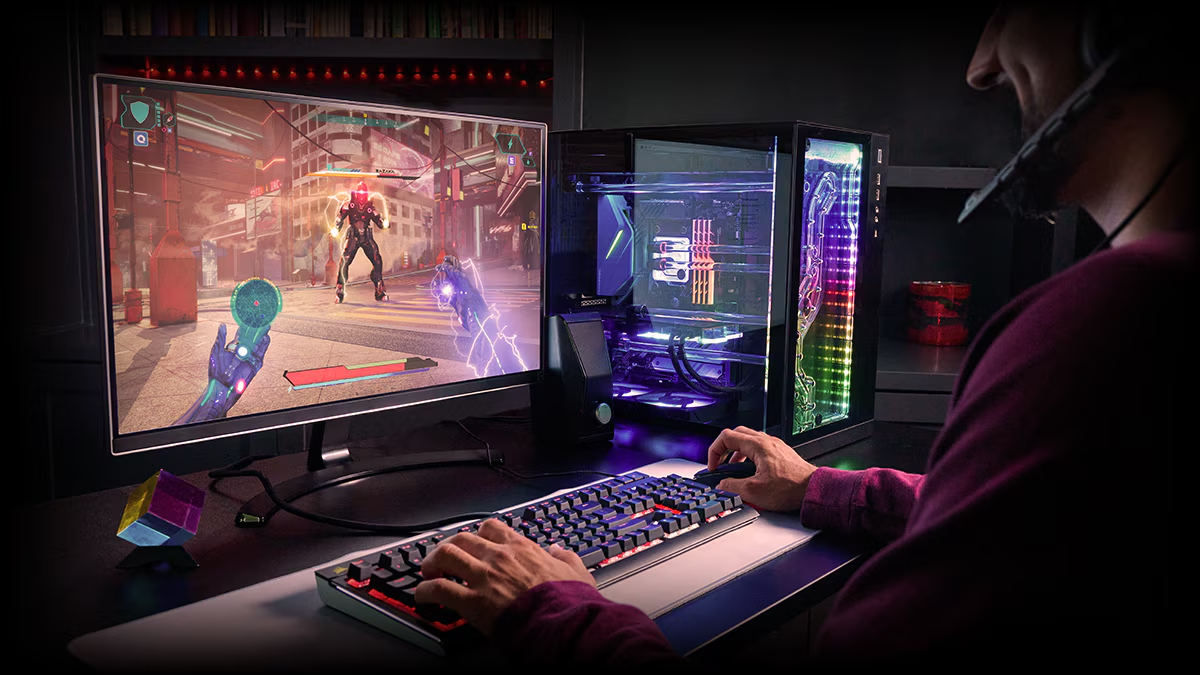The evolution of gaming has been a remarkable journey, transforming from simple pixelated experiences to complex virtual worlds driven by artificial intelligence (AI) and cutting-edge technologies like cloud gaming. These advancements have not only enhanced gameplay but also redefined how games are developed, played, and experienced.
1. AI-Powered NPCs and Dynamic Gameplay
Artificial Intelligence has been a major player in gaming, especially in the development of non-playable characters (NPCs). In early games, NPCs followed predetermined scripts, offering little to no flexibility. As AI progressed, developers introduced NPCs capable of learning from player actions, adapting their behavior based on the player’s decisions, and creating better, dynamic interactions. For instance, games like The Elder Scrolls V: Skyrim and Red Dead Redemption 2 feature NPCs with complex schedules and reactions based on player choices, making the game world feel more alive and responsive.
One of the most notable applications of AI in modern games is procedural generation, where AI algorithms create dynamic content on the fly, such as in games like No Man’s Sky, which generates entire planets, ecosystems, and missions based on player interaction. This not only keeps the game fresh but also allows for infinite exploration and variability, making each player’s experience unique.
2. Cloud Gaming: The New Frontier
Cloud gaming represents one of the most revolutionary advancements in the gaming industry. Unlike traditional gaming, where players need powerful hardware to run games, cloud gaming allows players to stream games directly from the cloud, similar to how Netflix streams movies. This shift has been enabled by high-speed internet, and it allows gamers to play on almost any device, from smartphones to low-end laptops, without the need for expensive gaming rigs. Services like Google Stadia, NVIDIA GeForce Now, and Xbox Cloud Gaming (formerly xCloud) are at the forefront of this evolution, offering players access to high-performance games without the need for local processing power.
The beauty of cloud gaming lies in its accessibility and the ability to break down the traditional barriers of hardware limitations. With a solid internet connection, gamers can now enjoy console-quality experiences on devices that would otherwise be incapable of running such games. This has huge implications for the future of gaming, as it can democratize access to high-end gaming experiences and broaden the gaming community globally.
3. The Intersection of AI and Cloud Gaming
As AI and cloud gaming continue to evolve together, we’re seeing even more exciting possibilities. Cloud gaming platforms can now leverage AI to improve user experiences in real-time, from optimizing streaming quality based on the player’s connection speed to providing personalized game recommendations. Furthermore, AI is being used to enhance multiplayer environments by predicting and adapting to players’ behavior, adjusting in-game challenges, and even facilitating seamless matchmaking.
A good example of this is the integration of AI-powered bots in online multiplayer games, where AI helps fill in for missing players in multiplayer matches, ensuring the game remains balanced and engaging. In the near future, AI-driven adaptive learning could allow for game environments that shift according to the skill levels of players, creating a tailored experience for both novice and expert gamers.
4. VR and AR: The Next Frontier in Gaming
While AI and cloud gaming are reshaping how we play, the combination of these technologies with virtual reality (VR) and augmented reality (AR) has opened up an entirely new dimension of gaming. VR games, like those on the Oculus Rift or PlayStation VR, indulge players in entirely virtual environments, while AR games, such as Pokémon Go, overlay digital objects onto the real world.
The future of VR and AR in gaming is deeply connected to advancements in AI, which helps create more realistic environments and intelligent interactions within those spaces. AI-powered VR experiences are becoming more refined, enabling better motion tracking, dynamic world-building, and even personalized interactions that respond to the player’s actions in ways that are more natural and fluid.
5. The Rise of Cross-Platform Play and Cloud Saves
One of the most beneficial changes in gaming in recent years is the rise of cross-platform play, enabled by cloud gaming services and powerful servers. Players no longer need to own the same console to play with friends—games like Fortnite and Minecraft now allow cross-play across platforms like PC, PlayStation, Xbox, and even mobile. This has drastically improved the social aspect of gaming, making it easier for people to play together regardless of the hardware they own.
Cloud saves also play a huge role in this shift, allowing players to seamlessly transition between devices without losing their progress. Whether you’re moving from a console to a PC or between different platforms, cloud saves ensure that your game state is always with you, offering greater convenience and continuity in your gaming experience.
Conclusion
From the early days of static and scripted NPCs to the real-time AI-driven characters and cloud gaming services we see today, the evolution of gaming is a testament to the power of innovation. AI continues to enrich the gaming world by creating smarter environments and gameplay, while cloud gaming is democratizing access to high-quality gaming experiences. Together, these advancements are setting the stage for an exciting future where gaming is more accessible and interactive than ever before. As the industry continues to grow, the lines between reality and the digital worlds we create will continue to blur, providing endless possibilities for developers and players alike.

